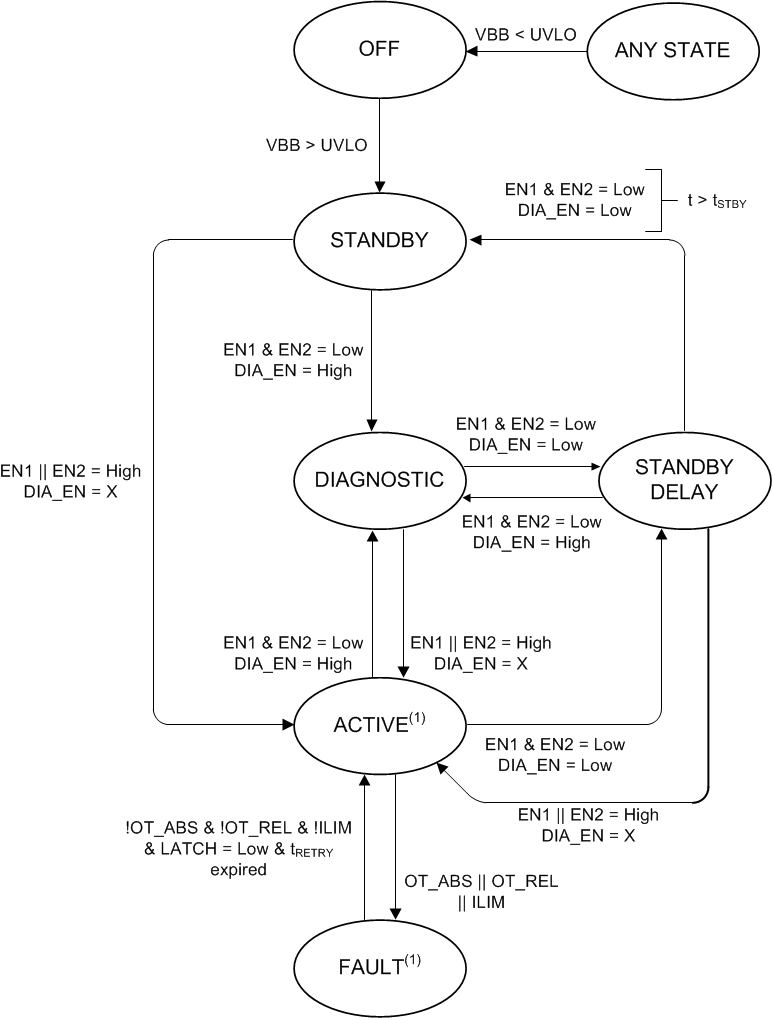ZHCSJN4C February 2018 – February 2020 TPS2HB16-Q1
PRODUCTION DATA.
- 1 特性
- 2 应用
- 3 说明
- 4 修订历史记录
- 5 Device Comparison Table
- 6 Pin Configuration and Functions
- 7 Specifications
- 8 Parameter Measurement Information
-
9 Detailed Description
- 9.1 Overview
- 9.2 Functional Block Diagram
- 9.3
Feature Description
- 9.3.1 Protection Mechanisms
- 9.3.2 Fault Event – Timing Diagrams - Version F
- 9.3.3 Diagnostic Mechanisms
- 9.4 Device Functional Modes
- 10Application and Implementation
- 11Power Supply Recommendations
- 12Layout
- 13器件和文档支持
- 14机械、封装和可订购信息
9.4.6 Fault
The Fault state is entered if a fault shutdown occurs (thermal shutdown or current limit). After all faults are cleared, the LATCH pin is low, and the retry timer has expired, the device will transition out of Fault state. If the relevant ENx pin is high, the switch will re-enable. If the relevant ENx pin is low, the switch will remain off.

CH1 and CH2 operate independently. Each channel is enabled or disabled independently. Also, if there is a fault on one channel, the other channel is not affected.
Figure 45. State Diagram